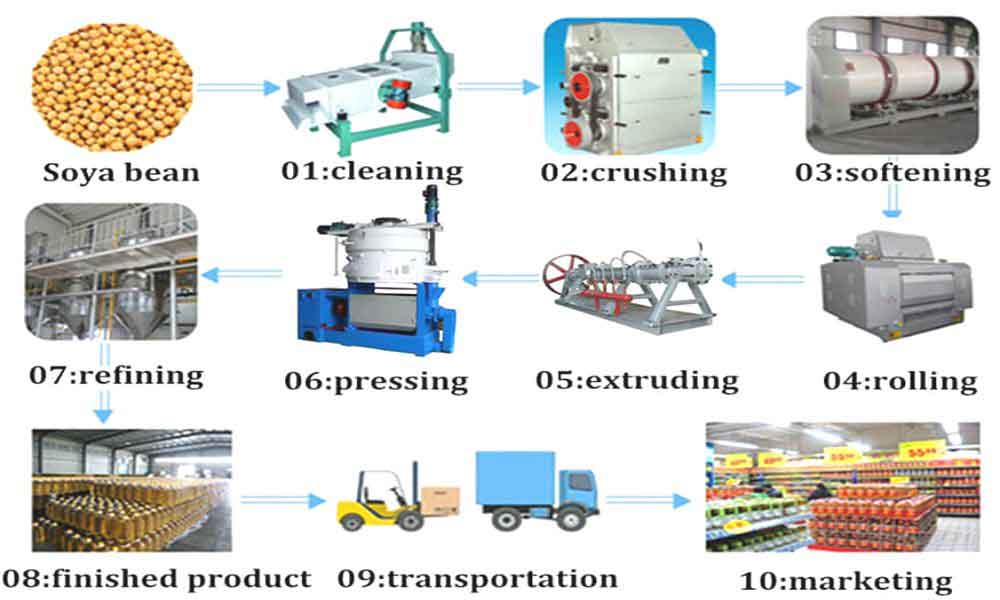1. Soybean Preparation and Cleaning
Receiving and Storage: Soybeans are received and stored in large silos or bins.
Cleaning: The soybeans are cleaned to remove impurities such as stones, dirt, and other foreign materials. This is usually done using screens, magnets, and destoners.
2.
Crushing and Dehulling
Crushing: The cleaned soybeans are cracked into smaller pieces.
Dehulling: The hulls are removed from the crushed soybeans. This can be done through aspiration, where the lighter hulls are blown away, or using screens and gravity tables.
3. Conditioning and Flaking
Conditioning: The dehulled soybeans are heated to soften them, making it easier to extract the oil. This is done in a conditioning vessel.
Flaking: The conditioned soybeans are passed through rollers to form thin flakes, which increases the surface area for oil extraction.
4.
Extraction
Solvent Extraction: The soybean flakes are treated with a solvent, usually hexane, which dissolves the oil. The mixture is then separated, and the solvent is recovered and reused.
Mechanical Extraction: Alternatively, the oil can be extracted mechanically using an expeller press, though this method is less efficient than solvent extraction.
5. Desolventizing
The oil and solvent mixture (miscella) is separated, and the solvent is evaporated from the oil. The flakes are also desolventized to remove any residual solvent.
6. Degumming
The crude oil is treated with water or steam to remove phospholipids, which form gums that can affect the quality and stability of the oil.
7. Neutralizing
The degummed oil is neutralized with an alkali (usually caustic soda) to remove free fatty acids, resulting in neutral oil and soapstock.
8. Bleaching
The neutralized oil is treated with bleaching earth or activated carbon to remove pigments and impurities, improving the color and quality of the oil.
9. Deodorizing
The bleached oil is heated under vacuum to remove volatile compounds that cause odors and flavors. This step produces refined, odorless, and tasteless oil.
10. Winterizing (Optional)
Winterization is an optional step where the oil is cooled and filtered to remove waxes that can cause cloudiness at low temperatures. This is important for oils intended for use in salad dressings and other products that need to remain clear when refrigerated.
11. Packaging
The refined oil is then filtered and packaged into bottles or other containers for distribution and sale.
12. Byproducts
The byproducts of soybean oil production include soybean meal, which is a high-protein animal feed, and lecithin, which is used as an emulsifier in food products.
Each of these stages involves specific equipment and technology to ensure the efficient and high-quality production of soybean oil.
















.png?x-oss-process=image/resize,h_1000,m_lfit/format,webp)


